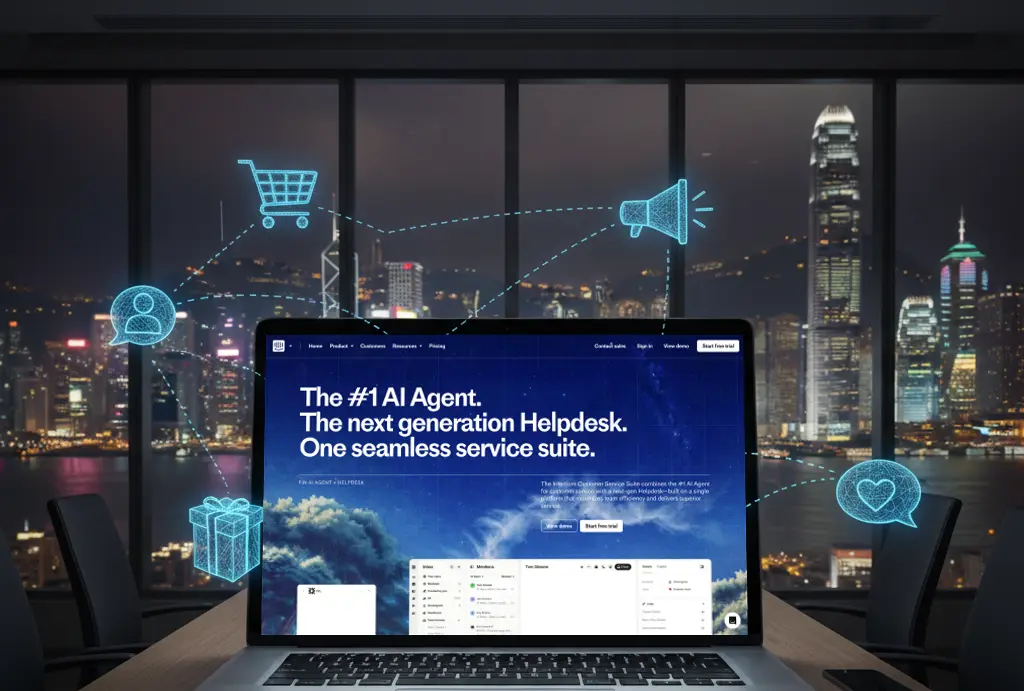BLOG
Where is Omnichannel Retailing Headed?
How to get ahead online with omnichannel retailing for brands in Hong Kong and Asia. Key approaches to delivering a consistent brand image, improving customer experience, and increasing brand loyalty.

The Online Retail Evolution: From Ecommerce to Mobile Shopping to Omnichannel Retailing
Ecommerce has been a huge disruptor to traditional retail. By offering conveniences such as item comparisons, 24/7 customer service, and home delivery, retailers that adopted online sales and online-only retailers have differentiated themselves to rapidly gain market share.
Other technological innovations have converged to accelerate changes in consumer shopping behaviour. Faster data connections make online browsing more convenient and in Hong Kong payment gateways such as Alipay, WeChat, Apple Pay and Android Pay have made mobile payments virtually frictionless. In 2017, mobile phones made up almost 50% of online purchases for Black Friday and Cyber Monday. The mobile-first trend will continue to grow in the coming years.
More customers making online purchases is good news for ecommerce businesses in Hong Kong. Transactions happening online gives brands an unprecedented access to insights about consumer preferences. Companies can create personalized experiences for customers at scale, using omnichannel engagement. Omnichannel is a natural next step for brands to integrate their multi-channel presence to help shoppers make purchases at any touchpoint.
First Steps to Building Omnichannel Experiences for your Brand
Many brands are currently engaging with customers on multiple channels, such as newsletter marketing, social media platforms, and sponsored offline events. This “multichannel marketing” is a good start for building brand awareness by increasing audience reach. Omnichannel marketing encompasses a multichannel approach, but emphasizes a unified brand experience. Omnichannel for retail is designed around a core brand experience that is personalized seamlessly across various channels for the end consumer.
Beginning with a Data-Driven Approach
An omnichannel approach begins first with analyzing existing user data to gain insights. For example, when do fans on social media actually visit the stores, and when they do, how do they navigate on it? How often do long-time customers make purchases? According to PwC, data-driven organizations are three times more likely to report a significant improvement in decision making.
Empathizing with Customers
Omnichannel does not require that brands be present in all channels. Rather, brands should consider their customers’ habits and preferences to optimize channel engagement. Streamlining and improving customers’ experiences across channels can begin with single points such as removing existing pain points for customers. Examples of optimizing customer experience can include improving the website load time, shortening the checkout page, or having an English, Traditional Chinese, and Simplified Chinese version of delivery information to serve demographics in Hong Kong.
Re-Imagining Digital Solutions
A consistent brand experience can include factors such as coordinated marketing across platforms, improving the customer journey, and adding conveniences in ways that relate to your brand. Understanding how your customers discover information can help decide where to invest in item listings and retargeted ads. Improving a customer journey can include simplifying an online-to-offline (O2O) campaign, offering mobile payments using Apple Pay or Android Pay, and offline pickups with a simple QR code scan. Finally, small conveniences can include having customers accumulate integrated loyalty points by shopping online, offline, using their physical membership card or mobile wallet.
Below, we outline creative and successful omnichannel marketing initiatives that have helped brands learn about their customers and improve item recommendations to boost sales.
Introducing the AI Mobile Catalogue for Fashion Retail

One aspect of omnichannel retail is to increase customer engagement in the brand ecosystem. Neiman Marcus developed the Snap. Find. Shop. iOS app to help shoppers find items they like by taking photos of items that would be matched with the brand’s inventory.

The AI-powered app finds the most suitable item based on a user’s uploaded images, becoming the personalized shopping assistant fashionistas have always wanted. This mobile shopping assistant reduces a lengthy and potentially frustrating in-store search into a delightful one-minute photo upload and purchase experience.
Using AR to Help People Compare Products at Home

IKEA began its ecommerce with an online store and home delivery service. Since then, it has built a suite of mobile apps that serve customers at every stage of their purchasing experience, from browsing and interest, through to shopping assistance. IKEA’s mobile apps include IKEA Catalogue, IKEA Store, Range knowledge on the go!, and IKEA Place. These apps help shoppers get inspiration for home furnishings, educate on IKEA’s products, and even help shoppers check off lists as they are walking through the store. IKEA’s signature app, IKEA Place, uses augmented reality (AR) to help shoppers place items directly in the room that their smartphone camera is capturing. The customer experience for IKEA can begin at home, where shoppers can then see how the item fits through the AR render on their mobile phone.

Omnichannel retail helps companies engage customers beyond the store or direct marketing. Companies in Hong Kong can take inspiration from IKEA in asking where or when would their customers most likely want to have assistance or information that your brand can provide.
Creating an Immersive Brand Experience with Mobile and IoT Integrations

Because omnichannel is still evolving, we believe online retailers should also look beyond commerce to draw inspiration for using technology to create integrated digital experiences.

We can take a look at Disney, an entertainment industry leader, and see how technology is applied to create immersive customer experiences. For example, the Disneyland app helps visitors to the theme park and resort enjoy an enchanting and frictionless experience. The app includes convenient features such as bar code scans to skip admission ticket lines, an accessibility guide, ride wait times, search for photographers, and menu information. Information is available when visitors need it and helps them complete tasks (such as restaurant bookings) to get back to enjoying their time in the park.
Technology also helps Disney create a magical customer experience. Disneyland resorts built that reality with its IoT MagicBands, which unlocks a guest’s Disney Resort hotel door, gives access to theme parks with valid admission, works for FastPass checkins, and charges for food and merchandise purchases during a hotel stay. The branded wearable tech removes the hassle of settling payments or searching for keys and instead builds on a fairytale experience in line with Disney’s brand.
—
While omnichannel marketing and experiences are still being defined, brands in Hong Kong and Asia exploring omnichannel can start by looking at customer needs first to think about how the brand can help address those needs. Omnichannel marketing is not just about directly driving for more sales, but instead begins at delivering consistent offline and online customer experiences for key touch points from pre-sales to post-purchase customer service.
Brands need to look at where their business are headed to select the services, products, and marketing direction they can innovate on to deliver great customer experiences. Exceptional omnichannel experiences are the next battleground for brands to creatively attract, deliver value to, and retain customers.




